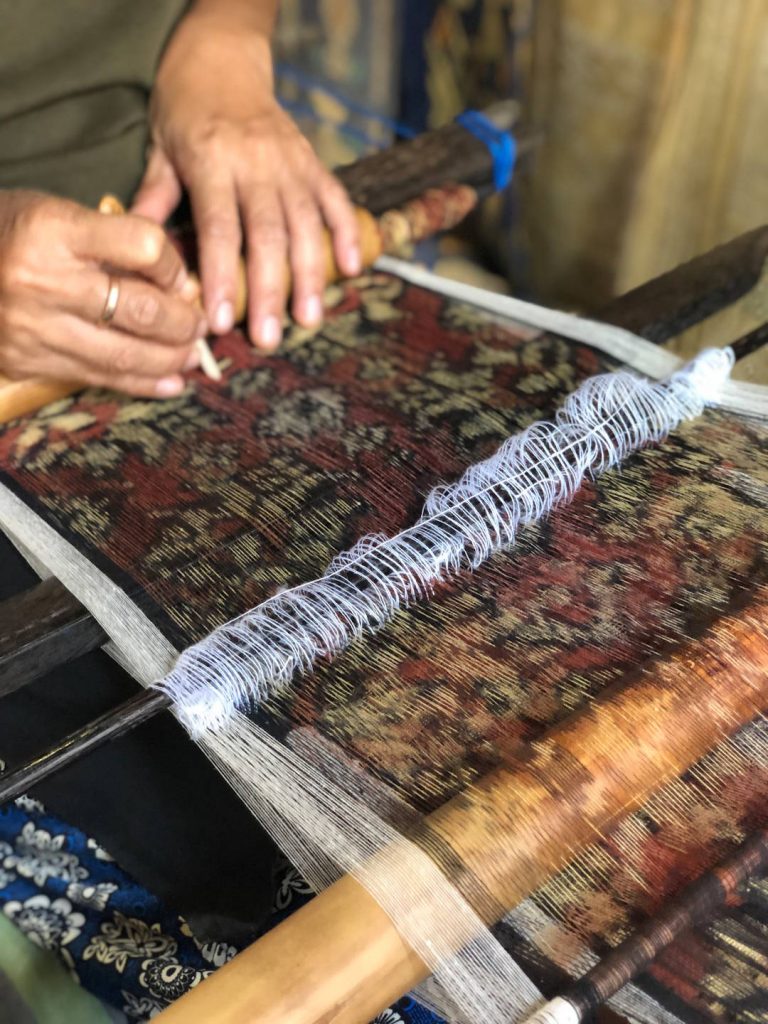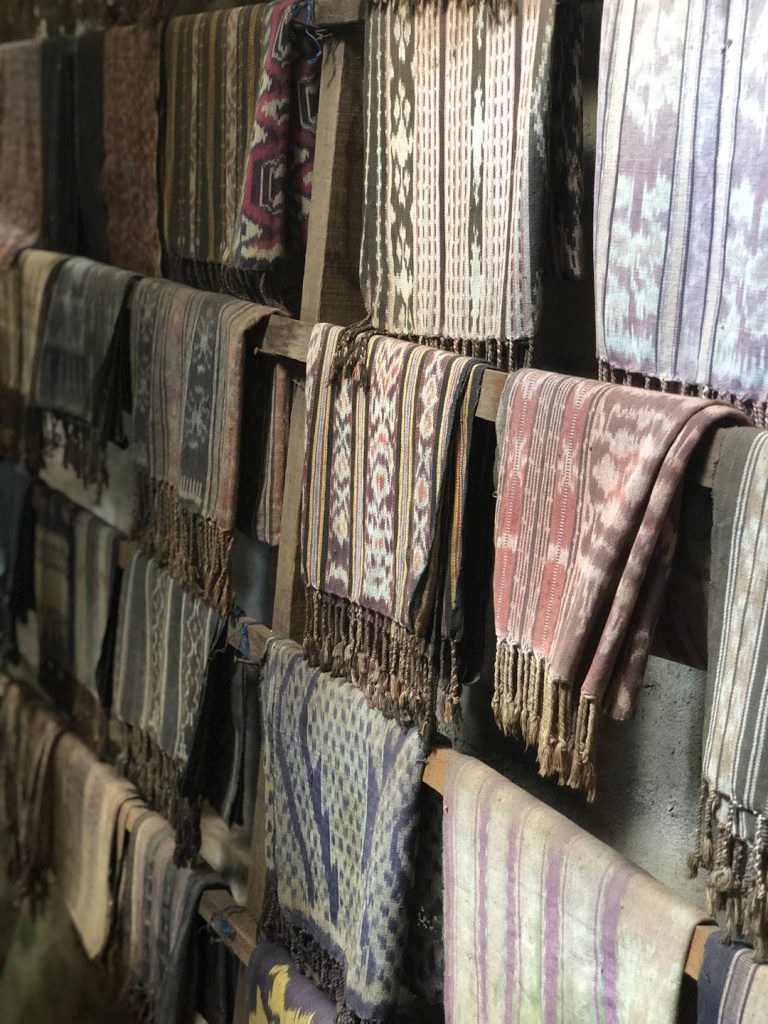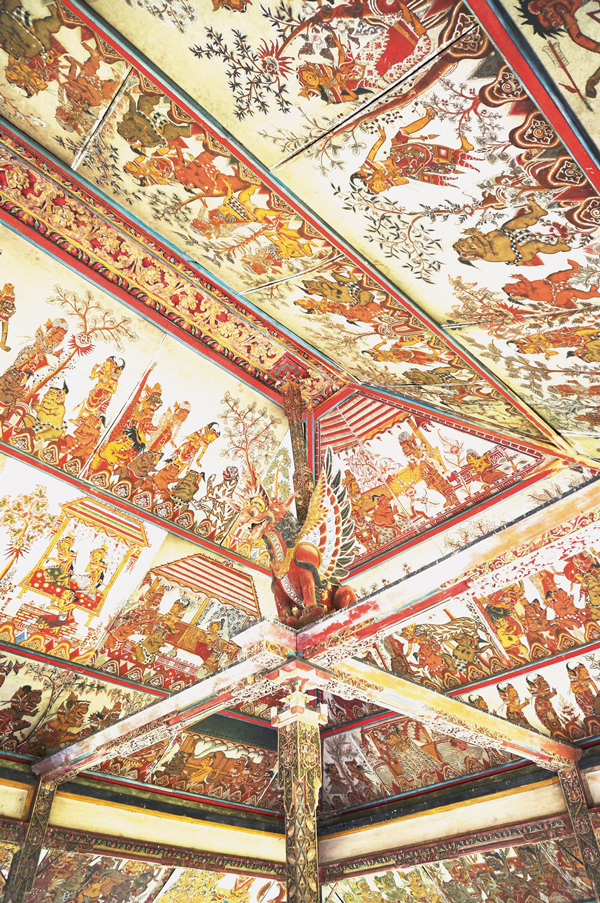Bali is rich in cultural diversity and to visit one of the traditional villages on the island is to get an up-close look into the wonders and deeply-rooted cultures of the Balinese people, their lifestyle and history.
From music and carving to sculpting and painting, culture flourishes in the many traditional villages across Bali. Art and culture are inseparable from Bali’s customs, beliefs, superstitions, history, and survival of its people.
Bali is home to many artisans and craftsmen, however what’s special about this is that many of them can be found in specific areas or villages. Particular skillsets have flourished as part of the localised culture, making visiting these villages an interesting exploration of a certain craft.
Ikat Cloth of Tenganan Village
Just off the popular Candidasa in Karangasem regency, Tenganan Pengringsingan is an ancient village that, in the midst of the modernity Bali currently sees, still embraces rural life as it was centuries ago.

Tourism can be found in Tenganan Pengrisingan, however the village still retains much of its centuries-old layout, and villagers, too, still maintain a strict cosmology and social organisation. Thus, they must live inside the village and marry from within.
Culture prospers here, with ceremonies to observe one’s cycle of life and rites of passage commonly calling for colourful cerebrations. Adhering to its own local calendar, the festivities at the old village have garnered reputations as some of the must-see ‘real Bali’ attractions.

Sachi Kondo 
Sachi Kondo
In addition to the rituals, the uniqueness of Tenganan Pengringsingan is due to its ongoing survival of traditional crafts. The villagers are known as fine makers of baskets and double ikat traditional woven cloth, as well as calendars that are written on palm lontar leaves. And this in a way also creates a unique shopping experience, where traditionalism and culture are offered at unique shop houses of the villagers. The best thing is there’s no pressure for every visitor to buy the products, and you can directly bargain with the stall owners.
Passing the gate and into the village, you’ll notice the villagers tending to their souvenirs stalls, or sitting by the door of their homes, welcoming visitors to step inside and have a look at their humble store. Displayed on the stalls here are the calendars decorated with Balinese letters and characters from the Hindu tales. Painted wooden eggs and ata and wicker weavings (baskets and bags) are also Tenganan’s hot selling items. Both the ata baskets and bags are so sturdy, they’re said to last 100 years. They’re made from a vine collected from the hills behind the village.
Read more on Tenganan Pegringsingan
History of Art at Kamasan Village
Away from Tenganan in Karangasem regency and on to the neighbouring Klungkung regency, Kamasan is home to a different group of artisans, the makers of the Balinese hollowed coin known as pis bolong. The coins are made from five different elements known as Panca Datu or “five strengths of life” (iron, silver, copper, gold, and bronze). Traditionally, the coins are compulsory in quite a number of the Balinese Hindu rituals. Therefore, prayers and offerings need to be made prior to making the coins.
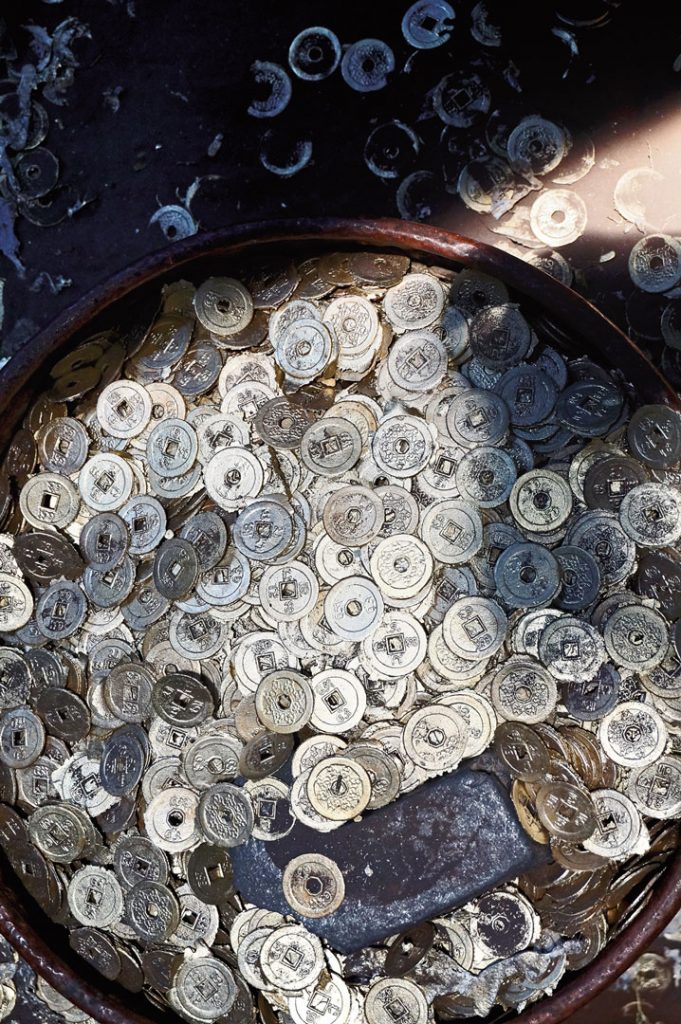
There was a time when these coins became a rarity; something that is odd especially due to their religious importance. Plenty of the coin craftsmen had abandoned their home workshops to work in the hospitality industry. And to anticipate scarcity of the coins, a home industry named UD Kamasan Bali was set up to continue the production of the coins, and at the same time conserving the tradition that has been practiced for centuries here in Bali.
With the Kamasan villagers’ natural flair for art, these coins are also shaped into beautiful statues and wall decorations, in addition to those for religious purposes. Beautiful creations that portray the Hindu gods and goddesses that are shaped from these coins can now be found adorning a number of resorts on the island, and even outside Bali.
What Kamasan is truly famous for is the classic style painting unique to the village, as seen decorating the ceilings of the ancient Kerta Gosa court hall in centre of Semarapura, capital of Klungkung regency.
The intricate paintings, in classic Kamasan style, is an important part of Bali’s history and culture. Kamasan village and its ancient tradition of painting, derived from the art of the great Javanese empire of Majapahit, is far from the usual tourist tracks. Consequently, most visitors to Bali get the false impression that Ubud is where art was born on the island. The art of Kamasan is a classic style based on the shadow theatre or wayang puppets. Kamasan once had many wayang puppeteers, but few remain today. For many centuries that tradition was practiced by the Sangging descent group, who gave their name to the section of the village of Kamasan where present-day artists are still found. Early in the 19th century the group died out in Kamasan due to lack of male heirs, but they passed on their traditions to others in the village through the most renowned artist of that era, Modara.
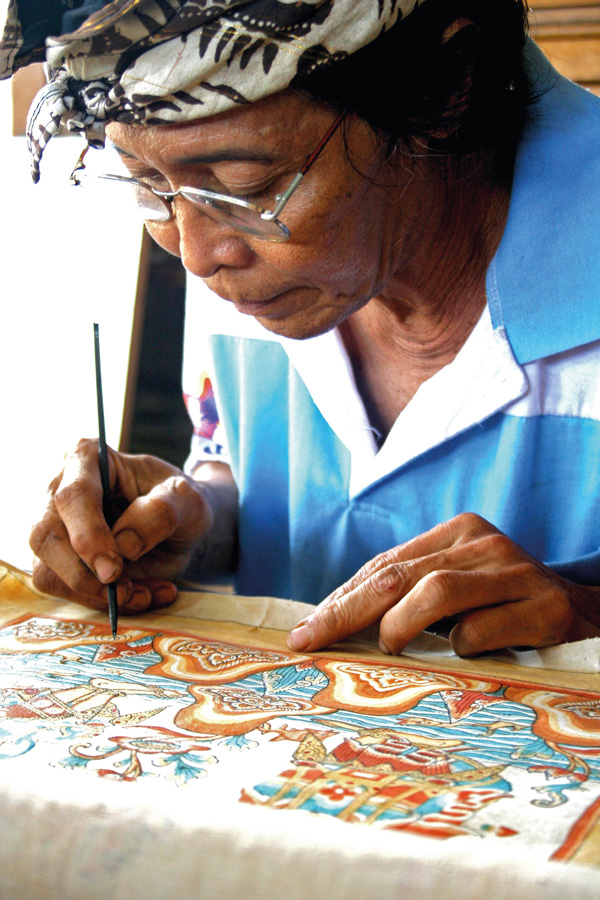
Despite the many developments in Balinese painting during the 20th century, the classic style of Kamasan still remains. It was one of Modara’s descendants – the late Nyoman Mandra himself, passed away early last year – who has made huge efforts to keep the Kamasan’s art true to the style of the ancestors. Mandra was a student of one of the leading artists of the previous generation – his uncle, Nyoman Dogol – and from him Mandra also learned to observe the many great examples of Kamasan paintings found in the village temples.
In his home in Klungkung’s Kamasan village, Mandra set up a sanggar (studio and workshop) to pass this tradition to the younger Kamasan villagers. Mandra’s strong commitment to the artwork of his ancestors is evident not only in his own pure interpretations of the Kamasan style, but also in his encouraging younger artists to adopt the technique. Aside from the villagers – young and old – Mandra had also had visitors as his students.
Read more on Visiting Klungkung Regency
Musical Craftsmen of Tihingan
Moving on to the next village in Klungkung, Tihingan is where the music on the island comes from, a rare gem even in the artsy, culturally rich Bali.
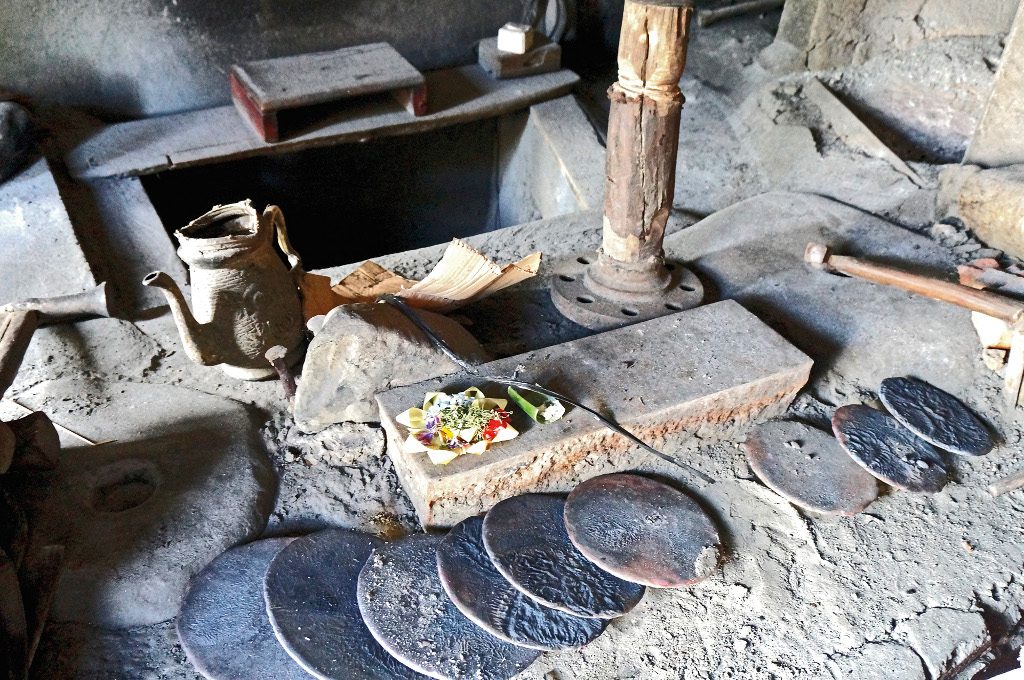
Indeed, the traditional Gamelan orchestra is one of Bali’s unique characteristics. From a simple celebration on the island’s rural villages to grand temple ceremonies, the orchestra is always played as an integral part of the festivity. With that being said, of all the villages throughout Bali, only a handful of villagers make a living out of crafting the traditional music instruments; and Tihingan in the Klungkung regency is one of the few.
In Tihingan the Gamelan production takes place in the villagers’ home workshops, done by both regular craftsmen and specialised experts (or known as Pande Gong) to set the tones of each of the instruments. A Pande Gong is an experienced music instrument craftsman, and almost all of the traditional music instruments found in Bali are made by a Pande Gong.
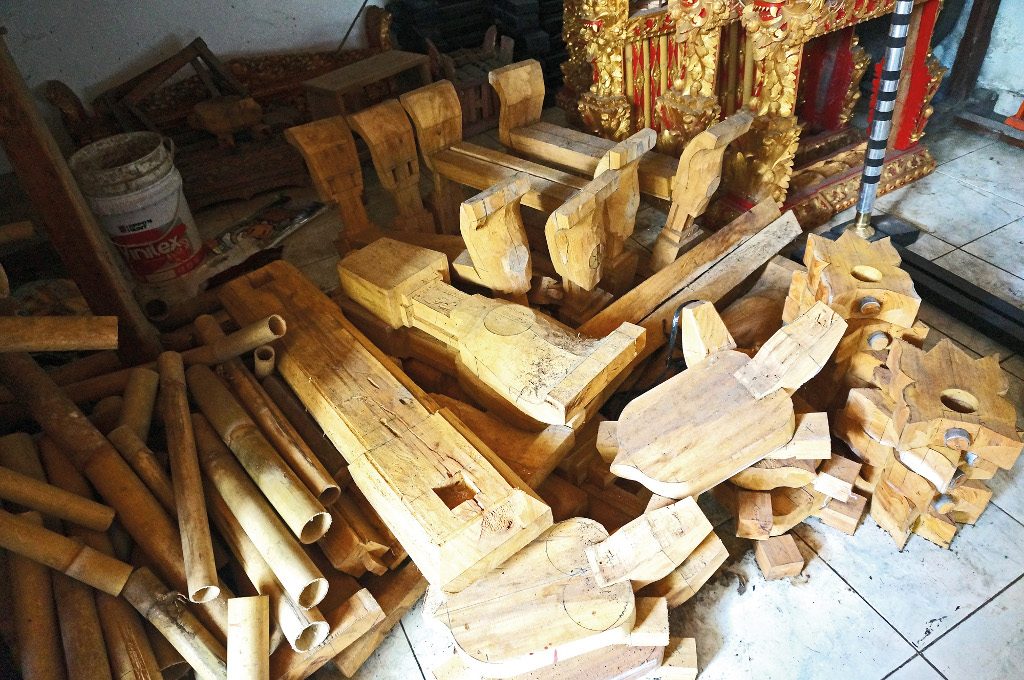
Every home workshop in Tihingan is open for visitors to visit, such as the Gong Kembar workshop, owned by I Wayan Sumandi (phone +62 812 394 8476). Here you can observe the craftsmen working on wood and metal, shaping the raw materials and crafting them into the final instruments before being shipped to other areas in Bali and even overseas. It could take around three months to craft a complete set of Gamelan, which normally consists of Jegogan, Jublag, Pemada, Kantil, Reong, Tawa-tawa, and Kempur.
Tihingan is located about three kilometres west of downtown Semarapura. If you’re coming from Kerta Gosa, go straight at the intersection with the statue of the Goddess Saraswati. Being so near from Semarapura’s main attraction, it’s odd to learn that, given music is an important part in the life on the island, Tihingan as a music instrument craftsmen village is not listed on Bali’s tourism map – especially since visitors can have a glimpse of the ‘real Bali’ here.
Read more about Tihingan Village and Musical Craftsmen
Carvers of Mas Village
Anyway, From Klungkung to Gianyar regency, Mas village on the outskirt of Central Ubud is home to some of the island’s finest woodcarvers. Of the many art villages on the island known for their wood carvings, Mas stands out for its intricately designed wooden masks; in fact, some of the carvers from this village, such as Ida Bagus Anom Suryawan, has travelled the world to introduce the typical Mas art form through exhibitions. The creations of decorative masks and performance masks used by traditional Balinese dancers have earned some of the village’s carvers a good reputation, even overseas.
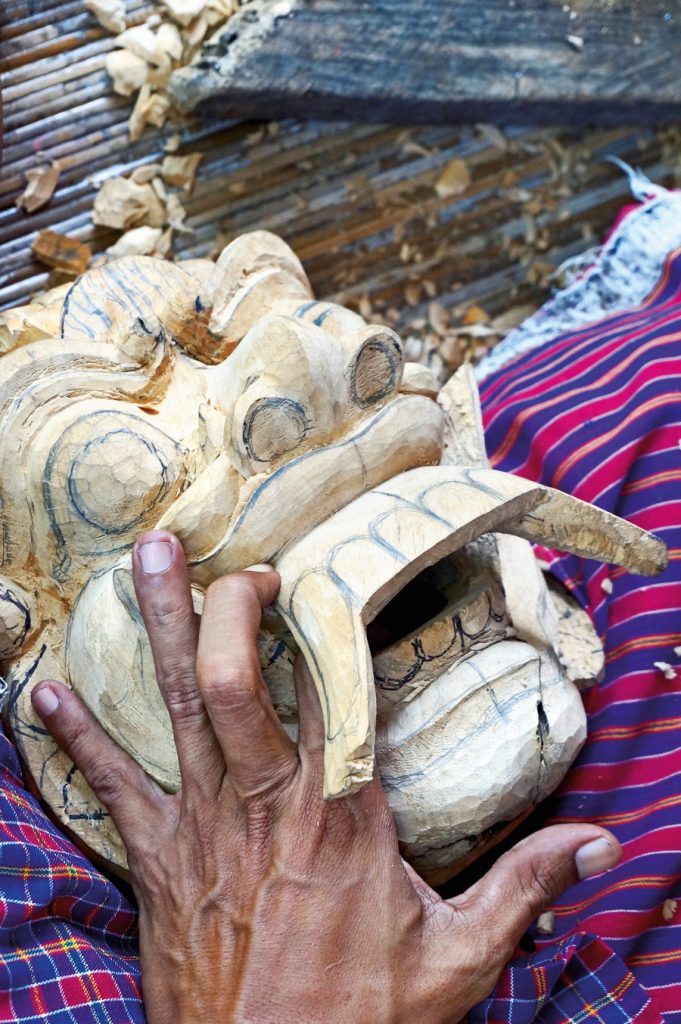
Using over 30 different tools, the carvers at the village take five to ten days to create simple masks, while the more intricate ones can take up to a month. Hibiscus is a common wood used to craft decorative masks, and the mask is polished to smooth its contours; hence making its fine grain visible in the finished product.
Performing masks, on the other hand, are made from Pule wood. They are coated with different paints and once finished, blessed through the performance of a certain Balinese Hindu ritual. Suryawan explained that in order to make a perfect performing mask, you need to know the character of the mask and how it moves; that way, you can blow a ‘breath of life’ into the wood and give the mask a soul.
Most of the carvers’ studios at Mas are open for visitors. If you’re there, don’t hesitate to go inside and have a look. You may find something interesting to buy as a souvenir, or for you to keep as a reminder of the Island of the Gods in your living room.
Read about The House of Masks and Puppets in Mas Village
Silversmiths of Celuk Village
Still in Gianyar, local silversmiths are busy creating intricate pieces in their home studios in Celuk village. Shanti Silver, for example. Owned by a family of local Celuk silversmiths, silver jewellery making takes place in the studio inside the family compound. They’ve been crafting silver jewellery since 1980, and a lot of them are sold overseas to quite a number of international jewellery brands.
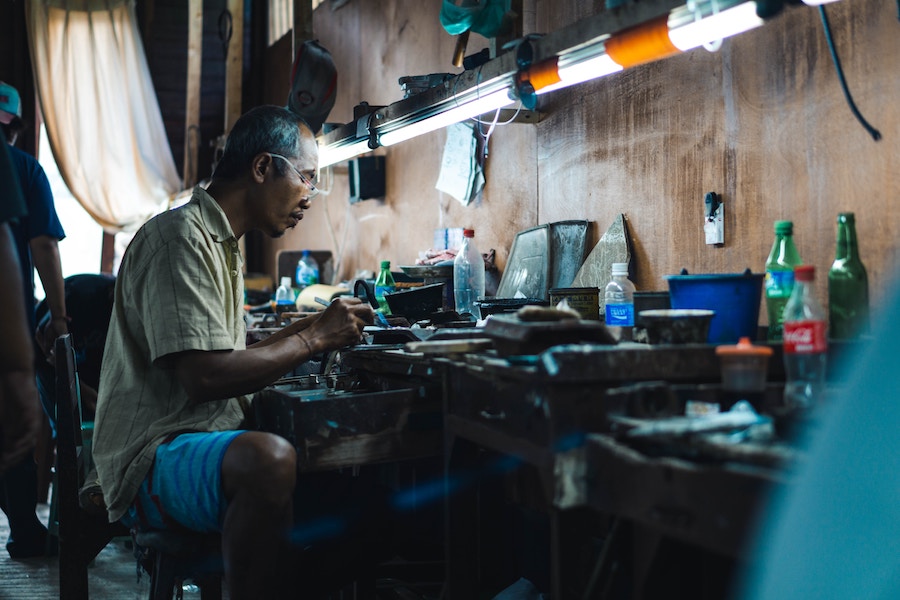
The uniqueness of Celuk silver jewellery, such as those made by Shanti, is in the detailing that often apply local motifs and patterns, and that the pieces are handmade. Most of the pieces are produced in small numbers for the reasons of quality and rarity. Shanti Silver is just one of the home-based silver productions in Celuk, for the area is packed with households of silver making families.
In the hands of the silversmiths of Celuk, the silver is magically transformed into beautiful rings, bracelets, necklaces, earrings, broaches, and even silver statues and dinner sets.

Passing the area you’ll notice signboards placed in front of many homes; some have their own galleries and showrooms, and others only produce the pieces for other jewellery brands. If you’re in the area, don’t hesitate to knock on their doors and ask to observe the making process of the silver jewelries. Moreover, some silversmiths allow you to forge your own jewellery. They will even teach you how to use the tools properly.
All in all, whether in time of a cultural celebration, or just a regular weekday, a visit to Bali’s traditional villages will give you the chance to observe a traditional life where unique cultures and craftsmanship have been passed down for generations, and are still thriving even in the midst of the digital age.

